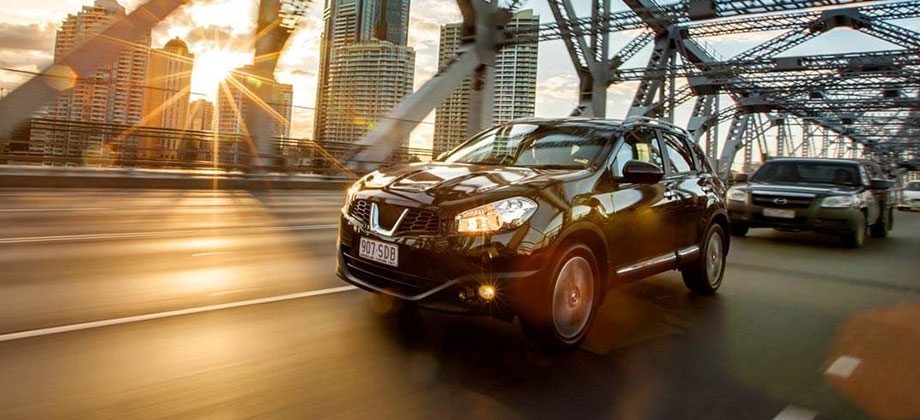Motorcycle safety research
"Over the last ten years total vehicle kilometres travelled in Australia increased by around 14 per cent […] the growth in motorcycle and scooter usage was very high 82 percent” - quoted from Australian Transport Council (ATC 2011, p12)
The Australian Transport Council (2011, p12) believes that the rapid increase in motorcycle activity experienced during this time was unforeseen at the start of the decade and contributed to a 17 per cent increase in annual rider fatalities between 2000 and 2010.
An increase in motorcycle riding is a road safety issue because, as Johnston et al. (2008, pvii) have found: per vehicle kilometre travelled, the Australian rate of motorcyclist deaths is approximately 30 times the rate for car occupants, and the corresponding rate for serious injury for motorcycle riders is 41 times higher.In Queensland during 2010 there were 51 fatalities as a result of crashes involving motorcycles, which represented 20.5% of the Queensland road toll (Department of Transport and Main Roads 2011, p16). Of the 51 fatalities, 49 fatalities were motorcycle riders, one fatality was a motorcycle pillion and one fatality was another road user (Department of Transport and Main Roads 2011, p16).
Motorcycle riders are particularly vulnerable because motorcycles are not as visible as larger vehicles (Royal Automobile Association of South Australia 2001, p17) and do not offer the same level of occupant protection (Australian Transport Council 2008, p47). Also, unlike other vulnerable road user groups (e.g., pedestrians and cyclists) motorcycles travel at higher speeds (Queensland Transport 2008, p20), which increases the severity of crash outcomes.
Motor scooters with a capacity of 50cc or less (mopeds) appear to be growing in popularity, particularly for commuters in urban areas. These scooters do not require motorcycle licences.
As riders receive no specific training, other than that required for a car driver’s licence, this can pose some issues in relation to vehicle handling and control and how they interact in the traffic environment. Some motor scooter/moped riders may not understand their rights and responsibilities, e.g., safe and legal scooter riding practices, registration and insurance issues.
-
- Retain current moped licensing requirements in Queensland, unless evidence supporting the introduction of a moped-specific licence can be presented.
- Develop and provide an approved refresher course and education materials for returning riders and encourage all motorcyclists to refresh skills and understanding by attending this course and other approved courses.
- Continue to develop and promote "sharing the road" education awareness campaigns that aim to make motorists aware of motorcyclists, motor scooter riders, their responsibilities towards them and vice versa.
- Reduce the potential for road treatments and roadside objects to create unnecessary hazards for motorcyclists, and consider the impact on motorcyclists when designing, constructing or upgrading roads (e.g., removal of dangerous roadside obstacles or replacing roadside objects with more forgiving products, address issues such as potholes, corrugations, debris, rough surfaces, gravel on corners, limited sight distance and sharp curves).
- Continue to monitor outcomes of the Q-Ride program in relation to crash statistics and continue to make adjustments where necessary.
- Continue to monitor trends in the use of motorcycles and motor scooters and whether any negative road safety issues are arising.
-
Australian Transport Council 2008, National Road Safety Action Plan 2009 and 2010, Australian Transport Council, Canberra, ACT, Australia.
Australian Transport Council 2011, National Road Safety Strategy 2011-2020, Australian Transport Council, Canberra, ACT, Australia.
Department of Transport and Main Roads 2011, 2010 Year In Review Road Crash Report, Queensland Government, Accessed 23/05/12 from the 2010 Year In Review Road Crash Report (PDF, 190KB).
Johnston, Peter, Brooks, Chris and Savage, Hamilton 2008, Road Safety Research and Analysis Report Monograph 20: Fatal and serious road crashes involving motorcyclists, Department of Infrastructure, Transport, Regional Development and Local Government, Australian Government, Canberra, ACT.
Queensland Transport 2008, Queensland Road Safety Action Plan 2008-2009: safe4life, Queensland Government, Brisbane, Queensland, Australia.
Royal Automobile Association of South Australia 2001, Living with the Motor Car: Road Safety, RAASA, Adelaide, South Australia, Australia.
